‘Switch’ combines color and sound to create dynamic game show
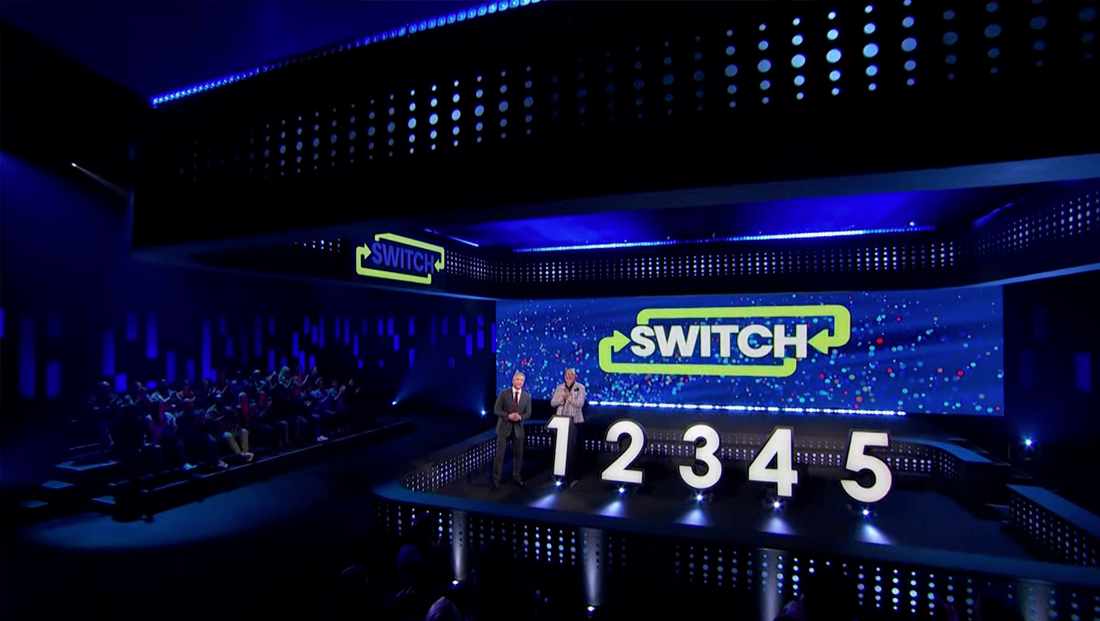
Subscribe to NCS for the latest news, project case studies and product announcements in broadcast technology, creative design and engineering delivered to your inbox.
Game Show Network’s “Switch” combines a five-contestant format with bold production, lighting and sound design that speaks to the heart of the game.
Featuring production design from JHD Group, the most prominent scenic element are the five large backlit numbers – that double as contestant lecterns – and are at the core of the show’s gameplay.
Installed at a slight angle, each number can change colors and also serves to hide a narrow pylon with input pads for each player. There’s also a small, color-changing spotlight installed at the base of each numeral.
The numbers themselves are created using a clean, geometric sans serif, spaced out across the center of the studio, which is surrounded by a low knee wall with a circular pattern, creating a “ring” of sorts for the contestants to face off inside of.
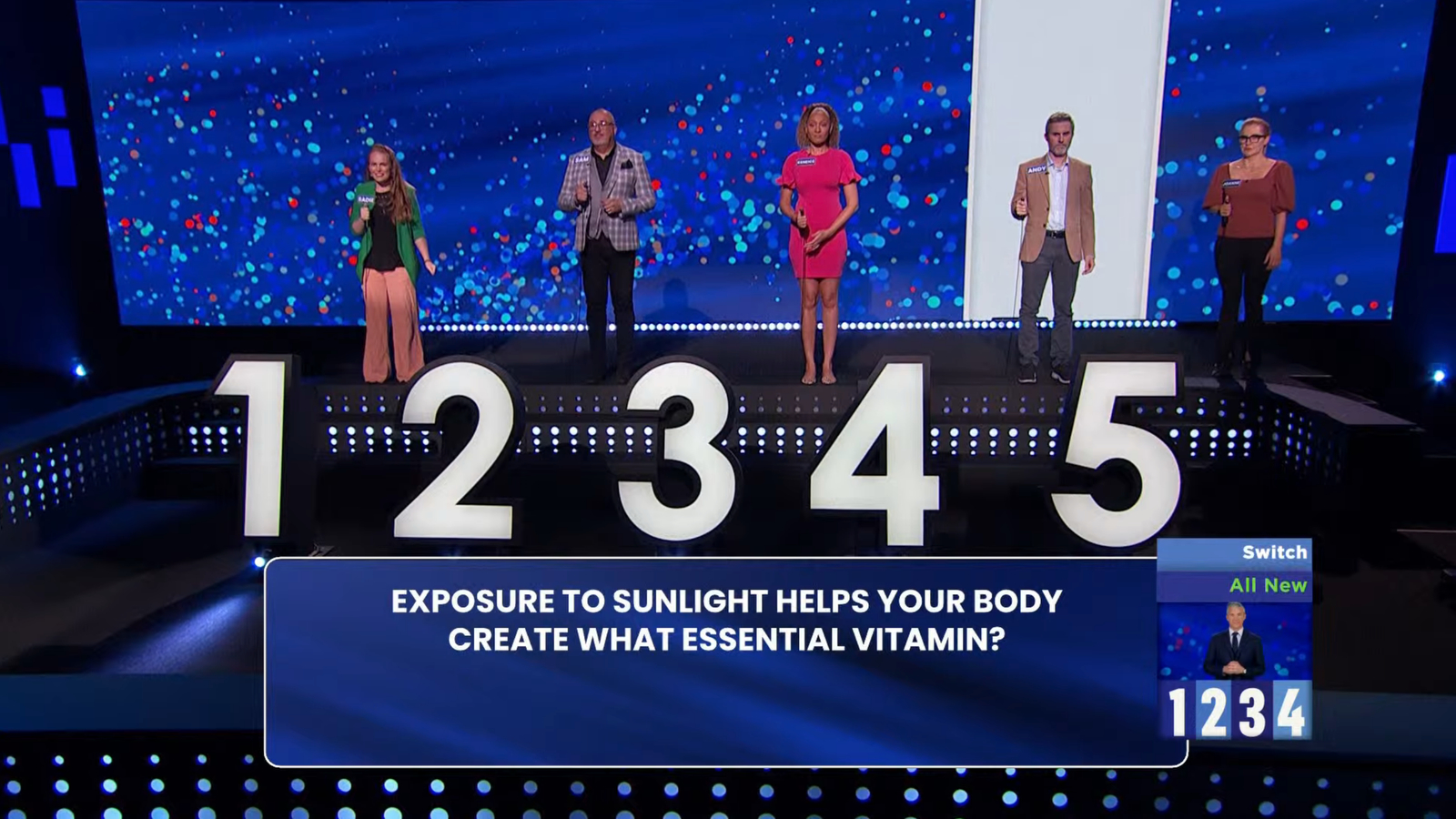
Initially, each contestant starts standing in front of the wide video wall background on an elevated platform. Each one holds a buzzer and the host asks a series of questions. The first one to buzz in with the correct answer steps down behind the “1,” with other contestants following as questions are answered.
The video wall typically showcases a looped animation of multicolored dots in various sizes reminiscent of a bokeh effect that also ties into the circular pattern used elsewhere in the studio.
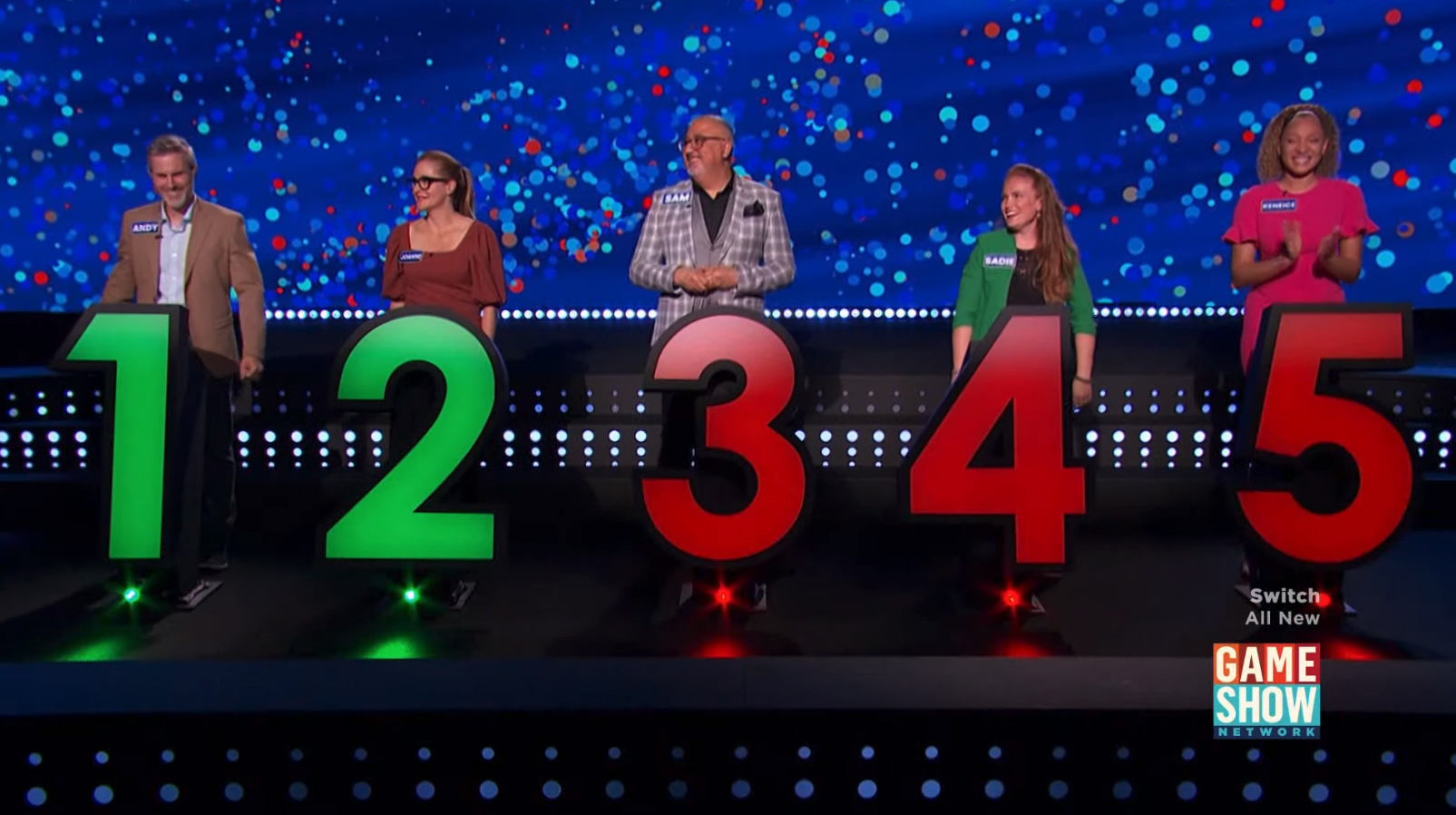
During the initial round, the video wall changes to white, along with a sound effect, behind the contestant who rings in and then green or red for correct or incorrect answers, respectively.
Once contestants take their initial positions, multiple-choice questions are presented and each contestant inputs an answer. Correct answers are revealed via on-screen graphics followed by each on-set number, along with the light below, changing green or red to indicate whether each contestant answered correctly or incorrectly. Answers are revealed along with a sound effect with a distinct tone for right and wrong answers.
As the game continues, correct answers can allow players to switch up the order in which they are standing, hence the show’s name. At the end of the regular game rounds, the person with the lowest ranking (or highest number) is eliminated and that number fades out.
For the final round aimed at awarding the $10,000 prize, the leading contestant answers a series of questions. This person starts behind the “5” and switches one number to the left for each correct answer and one number to the right for wrong ones. There is also a corresponding sound effect and color change to the numeral the contestant is currently standing behind. As the contestant moves spaces to the left, and closer to the goal of being behind the “1,” the trailing numbers remain green.
Wide shots of the row of numbers can include a variety of circular patterns, including capturing the ones on the knee wall closest to the camera, two installed on the front of the steps behind the numbers and, finally, the one created using a series of circular lights tucked just under the video wall.
The circular theme continues with columns of circles that grow in size as they extend outward from the vertical center of the knee wall and a suspended header element.
“Switch” also includes a small studio audience, who sit on risers behind the host, who stands camera left, and in front of the contestants on the opposite side of the knee wall.
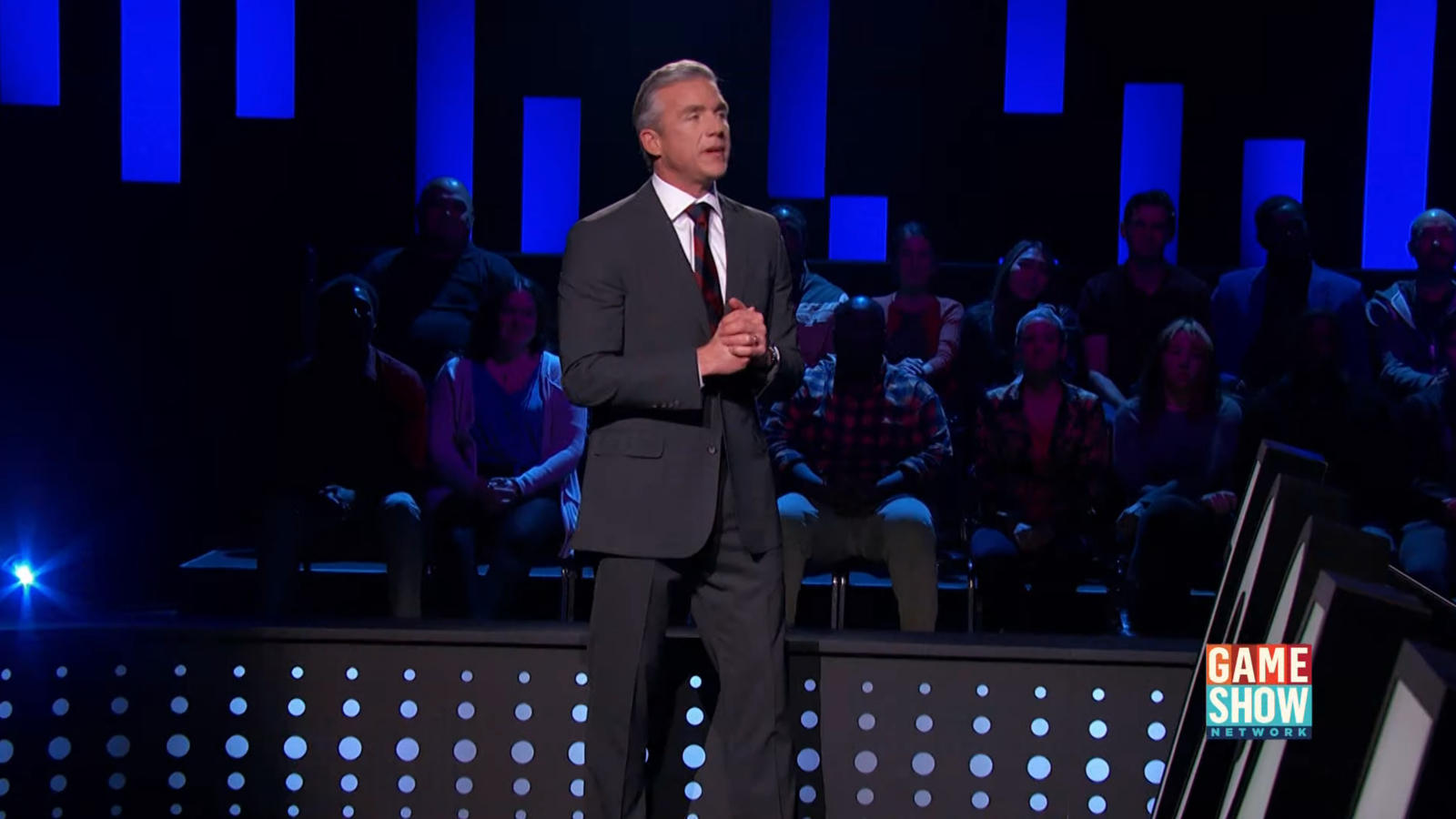
Behind the audience is a series of vertical stripes in a seemingly random pattern set against black. These are illuminated in blue and the audience itself remains largely in darkness while still illuminated with soft blue downlighting.
The lighting in the space is carefully done to light the host, actor Jeff Hephner, from both the front and above, making him stand out from the background. The entire imaginary line that the numbers jut up against is also lit so that contestants don’t end up stepping into dark spots when they perform the namesake switches on-camera.
There is a rather unfortunate shadow against the middle of the video wall when contestants stand on the riser for the initial round, however.
Lighting, mainly in the form of backlit scenic elements and video wall graphics, is also used extensively in gameplay, as mentioned.
Both the sound effects used during the game and theme music have a synthesized sound with a simple but catchy note pattern that sounds as though it’s drawing inspiration from the MIDI-like music used in classic video games.
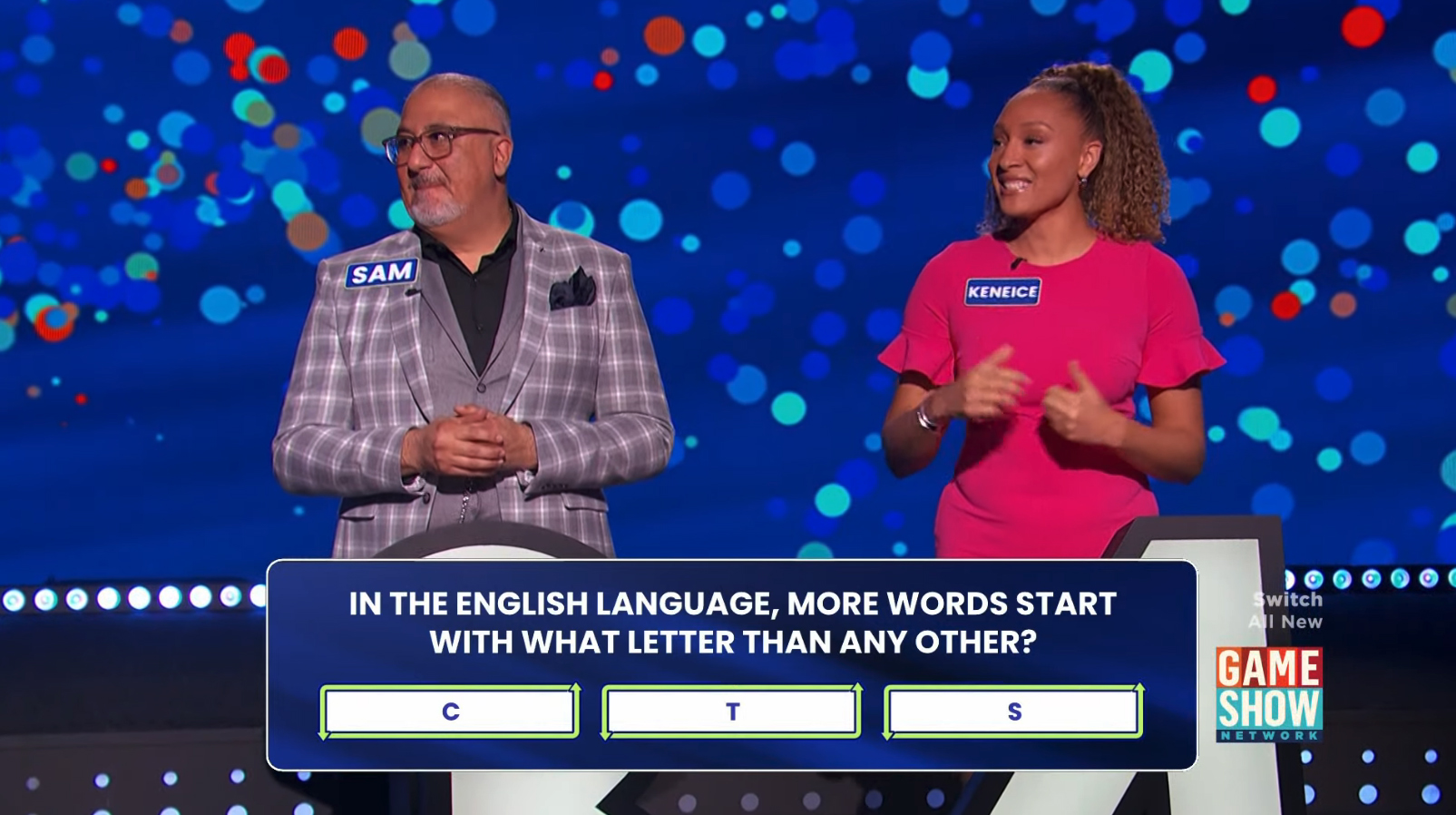
On-screen graphics, meanwhile, include an animated sequence used for opens and rejoins as well as the on-screen questions.

The core of this design is two lime green arrows that roughly frame out the show title, which, rather appropriately, also “switches” around its letters in some of the sequences.
In some cases, the animated circle background is used, while on-screen graphics such as the questions use a blue box with a subtle gradient background. Elements such as answer choices and the countdown during the final round are wrapped in a subtler version of the arrows from the logo.
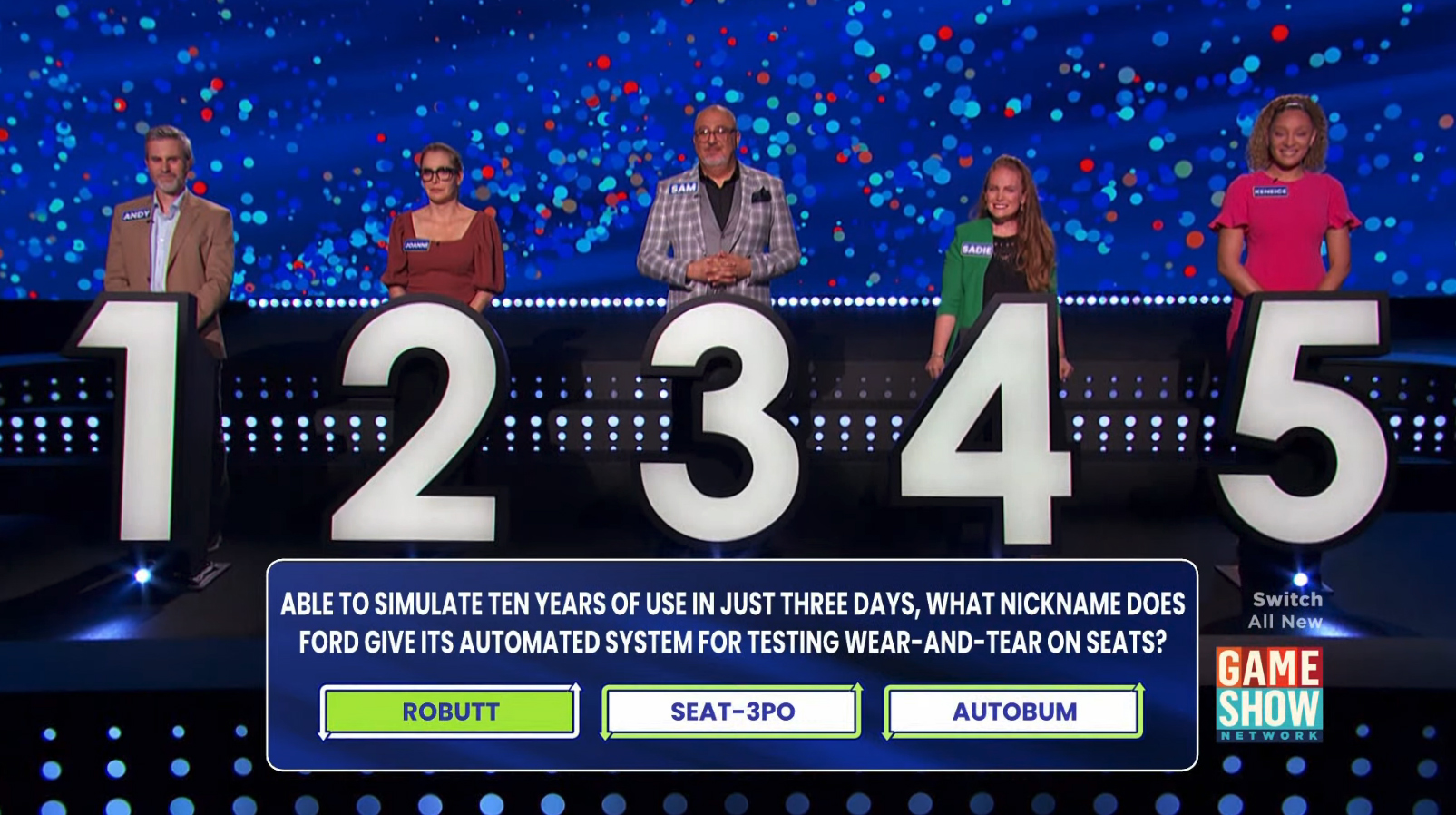
The correct answer is highlighted in lime green.
The show’s overall graphical color palette leans toward black and blue with accents of red and green that are used as both visual cues to gameplay and in backgrounds. The teal used in the show logo is distinct from the green shade used to indicate correct answers via the dimensional numbers but is similar when the correct answer is highlighted in the insert graphics.
The animated video wall background features circles in a mix of blues as well as dark green, teal, red, orange and brown, a selection that appears to take various shades or transparency levels of blue, red and green. The dots themselves notably do not, however, appear to be transparent.
Subscribe to NCS for the latest news, project case studies and product announcements in broadcast technology, creative design and engineering delivered to your inbox.





tags
Game Show Network, jeff hall, JHD Group, Switch
categories
Broadcast Design, Broadcast Industry News, Game Show Graphics Design, Game Show Set Design, Heroes, Set Design